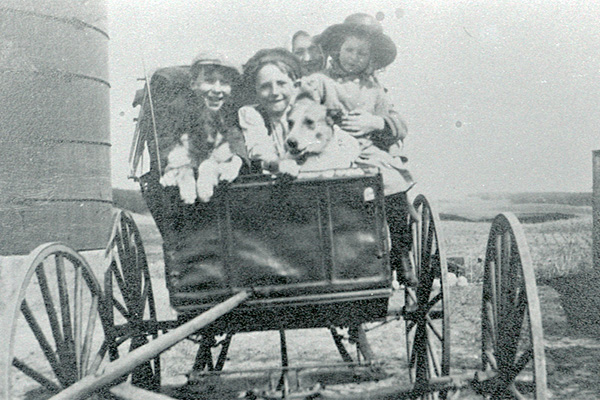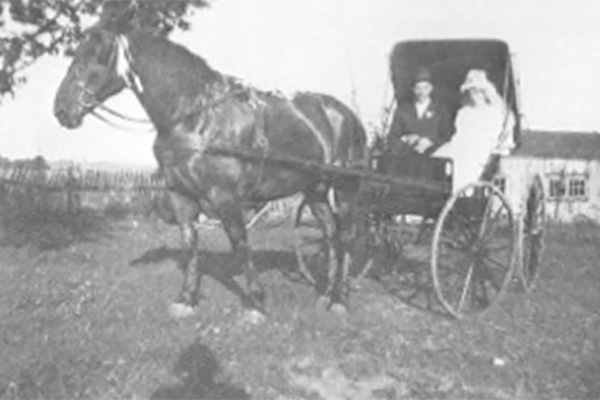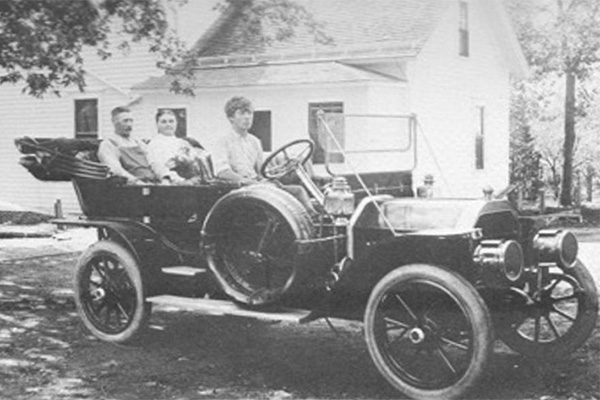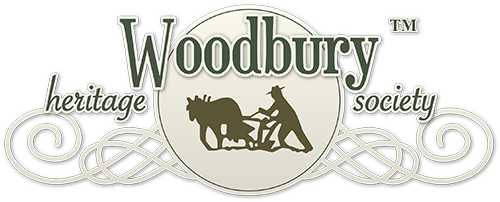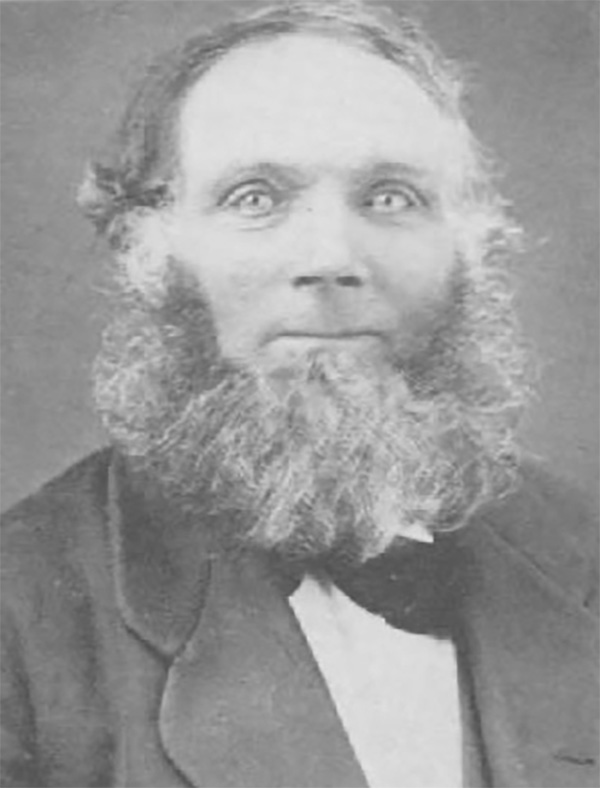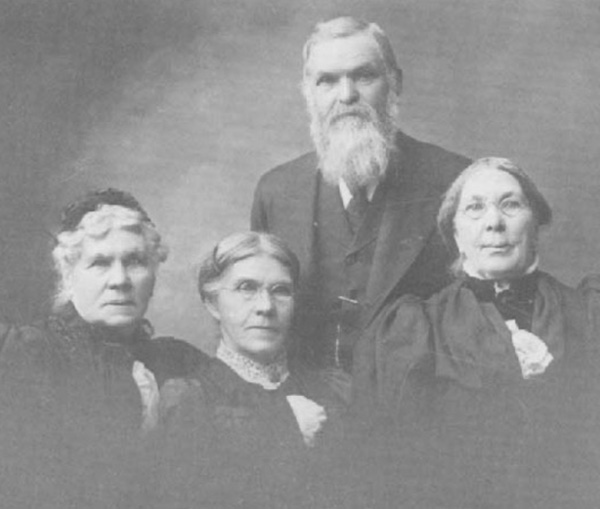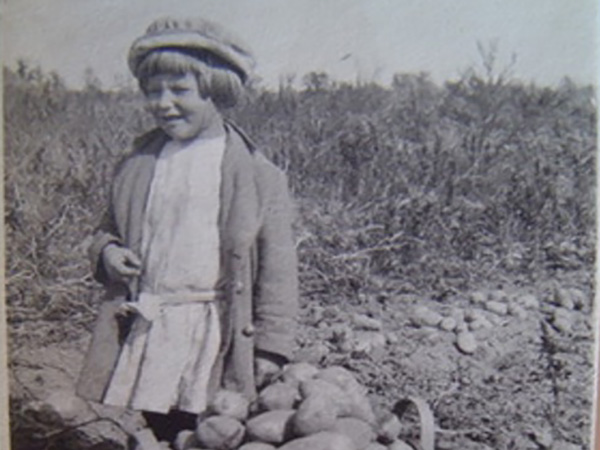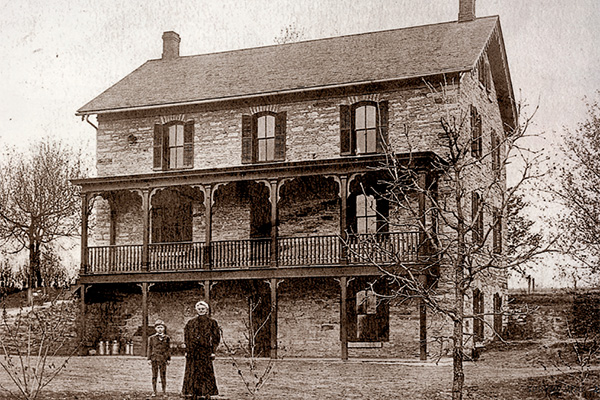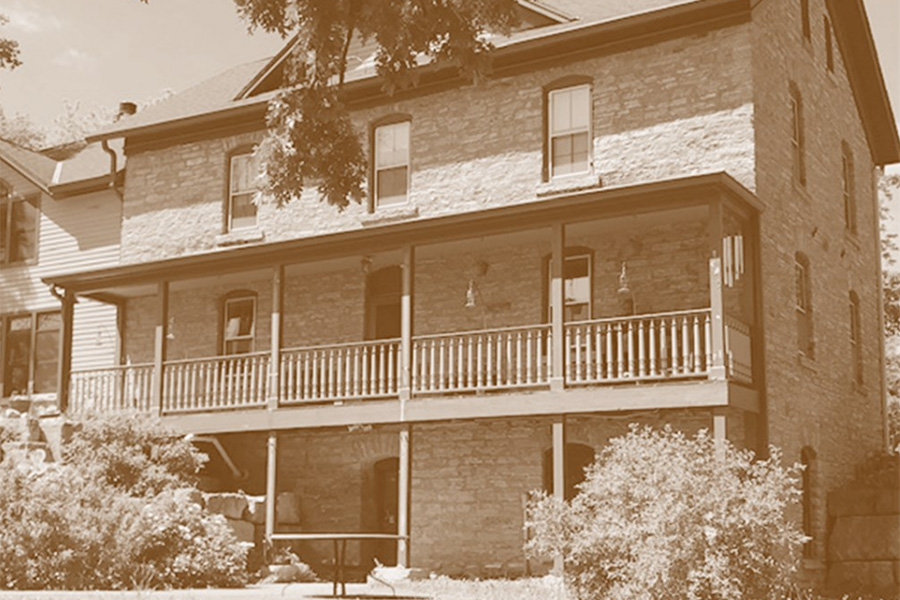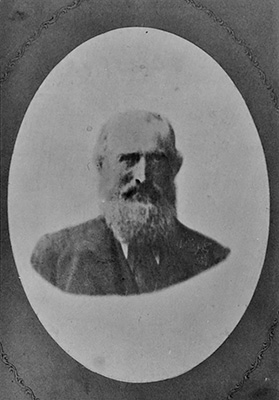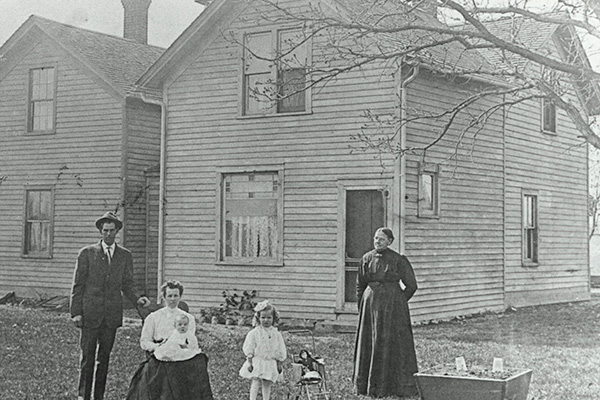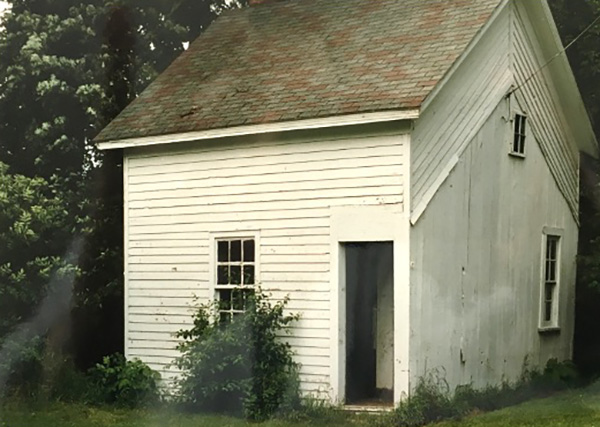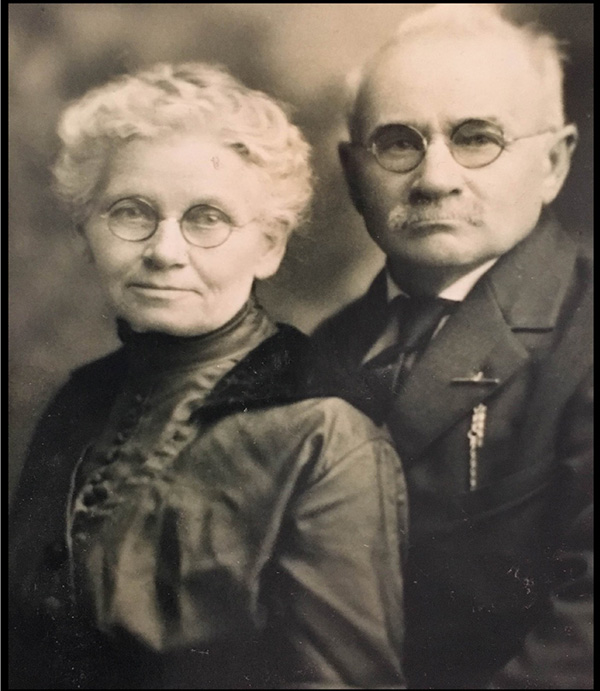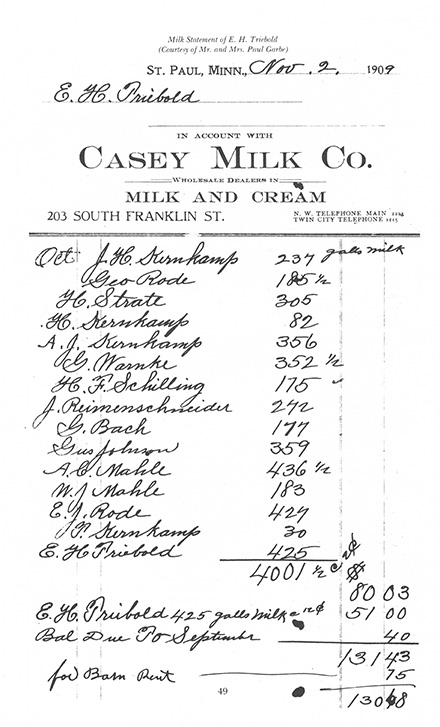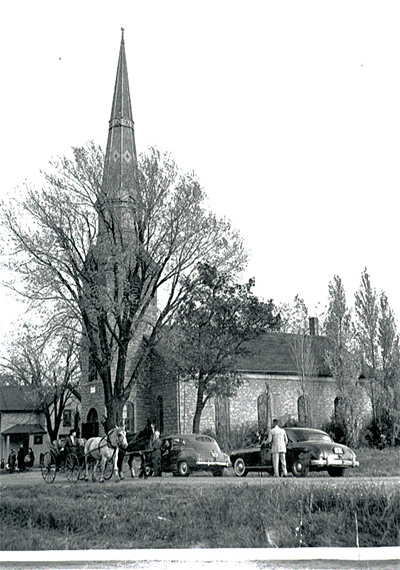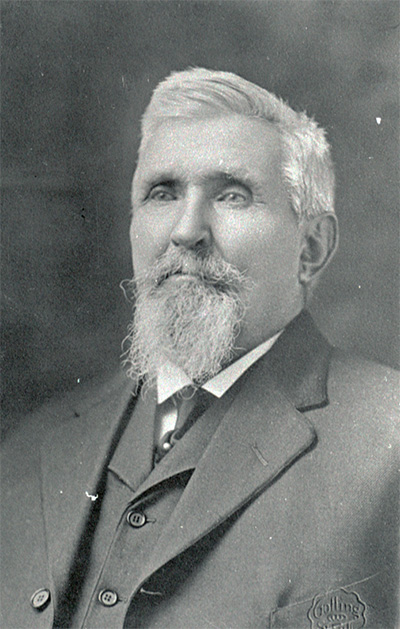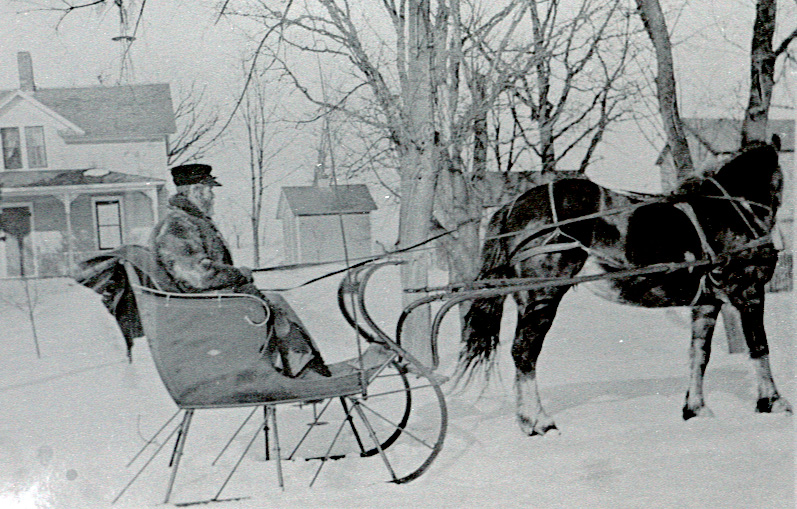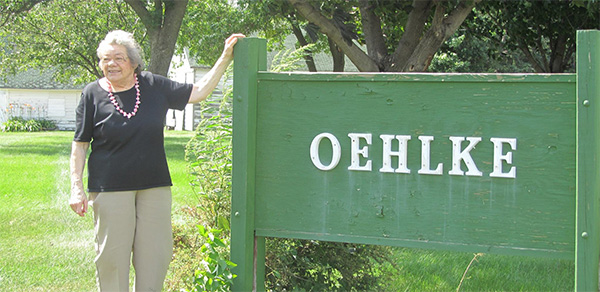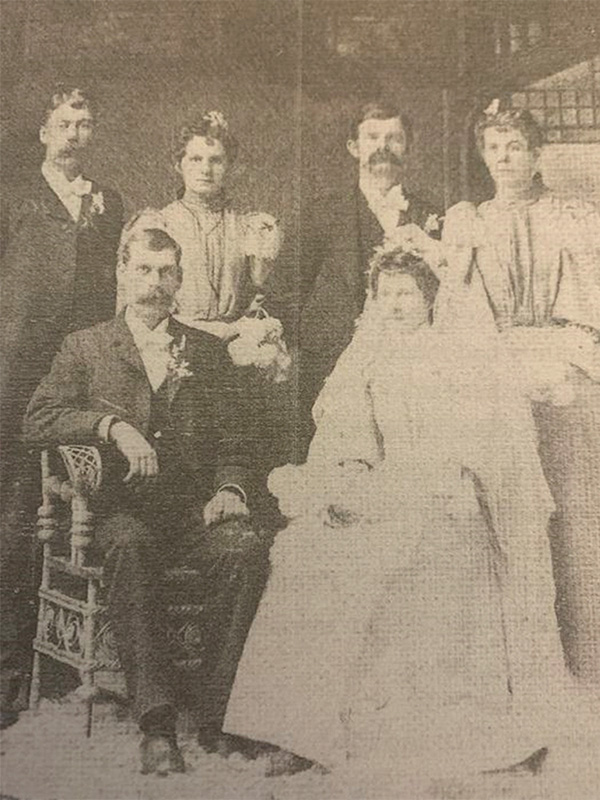Woodbury’s Early Settlers
Early Settlers
The first European settlers came to Woodbury in 1844. They were attracted by the rolling prairie’s good soil and oak openings. Most of the early settlers immigrated from Germany, Ireland, Scotland, Sweden, Denmark, and Switzerland, sometimes living in the eastern states before moving further west. Woodbury township was first organized as Red Rock in 1858.
In 1859 the newly formed state of Minnesota realized that there was already a Red Rock Township in Minnesota. Red Rock then changed its name to Woodbury, after Supreme Court Justice Levi Woodbury who was a friend of the first Town Board Chairman. By 1860, all the land in Woodbury was owned and the population was 350.
The McHatties
Scottish-born Alexander and John McHattie were the first settlers in Woodbury. In 1844, they staked a claim in the central part of Woodbury, east of County Road 19 and north of Dale Road. They built their house there in 1845. Many decades later it became the McHattie Tea House.
Alexander McHattie
John McHattie
The Middletons
James Middleton Sr. saw little future for his 8 children in Ireland, so he sent his eldest son William to the United States in 1839 to look over prospects. It took William six years to work his way up the Mississippi. His journey ended in land that later became Woodbury, where he claimed several hundred acres near a lake and woods in 1845. Dakota trails ran through the land.
That same year, he was joined by his parents James and Sara Middleton, and his seven brothers and sisters.
Waiting for them at Point Douglas Landing was William with his neighbors, the McHattie brothers, and three wagons with three teams of oxen.
The two McHattie men later married Jane and Margaret Middleton. William, who found their home, and his brother Samuel enlisted in the Union army during the Civil War and never returned. The first one-room schoolhouse in Woodbury was built on land donated by the Middletons.
James, Eliza, Margaret and Jane Middleton
The Schillings
John Henry Schilling arrived on Bailey Road in 1856. The family planted the first commercial orchard in Woodbury on their land in 1905 with approximately 300 trees. In addition to their dairy herd and raising crops, they sold apples, potatoes, and other produce at the St. Paul City market.
The Schilling School District 28, built in 1860, was one of the first in the county and it stayed open until 1952. The Schilling farm was the last working dairy farm in Woodbury when they stopped milking in 2004.
Jeannette Schilling harvesting potatoes.
The Schilling Farm
The Raths
Frederick and Sophia Raths immigrated from Germany in 1853 and came to Woodbury in 1864. They purchased their one-hundred-and-sixty-acre farm in 1866 for $1,280, adjacent to what is now the intersection of Lake Road and Radio Drive. In 1870 they built an attachment to their log cabin home; that building survived and is now preserved as the Woodbury Heritage House. In 1895 they sold the farm to their son Henry, and his wife Rebecca, nee Oehlke. Another son, George, farmed on Woodbury Drive by the present – day Eagle Valley Golf Course. His son Walter’s daughter Bernice married Orville Bielenberg in 1944.
Frederick and Sophia Raths
Henry and George Raths
The Spangenbergs
Charles Spangenberg bought 160 acres on Dale Road in 1869. The three-story limestone residence, with the timber-framed, board-and-batten barn and granary, is among the few remaining nineteenth century farmsteads in Washington County. Potatoes, grain and dairy were the farm’s primary products. The buildings are on the National Register of Historic Places.
1907
2021
The Bielenbergs
Claus and Elsabe Bielenberg came from Germany in 1876 and bought 80 acres at Bailey Road and what is now Radio Drive. Claus, his son Herman, and his son Orville farmed that land over the next 100 years. Orville’s life spanned Woodbury’s transition from a countryside of farms to a growing city. His son remembers Town Board meetings in their living room, with his mother, Bernice, serving coffee and cookies. In 1967, Orville Bielenberg became Woodbury’s first mayor when Woodbury was incorporated as a city. At that time the population was about 6,000 people.
Claus Bielenberg
Elsabe Bielenberg
The Bielenbergs in 1917
The Stutzmans
Jacob and Lizzie Stutzman from Billings, North Dakota bought the farm from Henry Raths and his wife Rebecca in 1903. Herbert Stutzman (son of Jacob), and wife, Laura Alvine Schilling married on November 24, 1910. In 1919, they became owners of the Stutzman farm and worked it with their two sons Roy and Warren.
The Stutzman family owned the land until 1993 when it was sold and developed into Marsh Creek.
Stutzman Homestead
Jacob and Lizzie Stutzman
Dairy Farming has been a major part of the economy of Woodbury throughout its history. In the early years, several farmers would gather up all the milk in metal cans and take turns hauling it to creameries in neighboring communities, first by horse and wagon or sled and later by truck.
In the 1900s, the first milk route, where milk was hauled by one man for a number of others was established by Ed. H. Triebold. Farmers formed the Twin City Milk Producers Association in 1916 to get better prices, and all the milk was transported to St. Paul.
Woodbury played a key role feeding the east Metro areas of the Twin Cities and beyond.
Ed H. Triebold’s milk wagon
Receipt from Casey Milk Company
Woodbury’s Early Churches and Schools were Important to Community Life.
Woodbury’s population was 990 in 1870. The settler’s lives centered around farming, church, and school. Three churches were organized in the early community: Woodbury Methodist in 1853, Salem Lutheran in 1863 and St. John Lutheran in 1868. Guardian Angels Catholic Church in Oakdale and churches in Hastings served the Catholic community.
All three of Woodbury’s original churches are still active, as is Guardian Angels in Oakdale.
German Methodist immigrants in Woodbury were first served by a circuit rider who lived in Stillwater. Woodbury Methodist was founded as a mission in 1853, and in 1855 a 24 x 24-foot chapel was built by the members and pastor. The $200 cost was a burden to the congregation, whose members were struggling to clear and till their new land. The church would grow to become one of the largest rural congregations of German Methodism in Minnesota.
In addition to religion, the churches filled other roles at the center of community life. Every Saturday, the pastor at Woodbury Methodist took his horse, buggy, or sleigh to St. Paul to get the mail. Woodbury’s first post office opened in 1870 at the home of Gottfried Hartung.
United Methodist Church
Salem Lutheran Church
Salem Lutheran Church was founded in 1863 and the first church was built in 1864 on Bailey Road. Its members learned their Catechism in German until 1920 and German services were held once a month until the 1940’s. Over the years the congregation has built 3 churches, 3 parsonages, and 2 schools on Bailey Road.
The founders of St John Lutheran, in the northeast corner of Woodbury, came from the Buffalo area in New York. They built a church in 1870 and a log school in 1873.
Schools
Between 1855 and 1867, seven public schools were organized in Woodbury. Most of them were in operation for almost 100 years, until they were incorporated into the South Washington County Consolidated school district in the 1950’s. They were one-room school-houses administered by three trustees and a clerk who were almost always parents in the district. A district required only five resident families.
Teachers, usually women, lived with local families. In Woodbury’s history, there are at least two- and probably more- instances of a teacher marrying a farmer in the neighborhood.
At Fish Lake School, near Colby Lake, a teacher was hired in 1877 for a salary of $30 per month. In those early years, it was customary to have three months of classes during the winter and two months in the summer. Fish Lake’s largest enrollment was 39 pupils during the summer session of 1878.
Almost everyone has heard stories about kids walking several miles to and from their one-room schoolhouse in all seasons. Once at school, there was work to be done besides their studies. Wood had to be carried in and the furnace stoked. Buckets of water were brought from a nearby farm. There was no electricity until the 1920’s or 30’s.
Woodbury’s First Doctor
Dr. A. F. Steen first came to the area in 1873 directly from Rush Medical School. He did not have enough money to buy a buggy and harness, so he bought a saddle horse to make his rounds. One of his prized possessions was saddle bags with special pockets for medicine bottles. During his earlier days, Dr. Steen sometimes took a foot path or cow’s path to someone’s home.
James Middleton, Jr. provided fast horses and often accompanied Dr. Steen on patient house calls.
Dr. Steen practiced medicine in the area for 56 years.
Dr. A. F. Steen
Leaving a Legacy
Charles Frederick William Oehlke immigrated from Prussia to Woodbury in 1859 and bought 80 acres at Dale & Tower. He was among the early settlers of what eventually became the City of Woodbury. Inez’s husband’s great grandfather and others in his family helped in the early development of Woodbury as it grew and evolved with the addition of roads, schools, businesses, churches, and other ingredients of a strong and vital community.
Inez’s father was proud of Woodbury, instilling in Inez a great passion for preserving the history of Woodbury and honoring the Native Americans and settlers who gave birth to our community. The values and hard work demonstrated in those early years continue to be represented in today’s Woodbury.
Her father, Eric Scheel was the first building inspector in Woodbury.
Inez was the inspiration for preserving the 100-year-old Miller barn at the Valley Creek Park. She established a substantial fund with the Woodbury Community Foundation for Woodbury Heritage Society use to preserve our community’s heritage for future generations.
Inez leaves us with a verse from a Robert Browning poem, “Come, come, come, grow old with me, the best is yet to be.”
Inez Oehlke
The First Marriage in Woodbury
The first marriage celebrated in Woodbury was that of John McHattie & his neighbor, Jane Middleton in 1856. John’s brother Alexander later married Jane’s sister Margaret Middleton.
Woodbury saw its first European settlers in 1844, when an Irish man (Willam Middleton) and two Scots (Alexander & John McHattie) claimed land in Woodbury. What followed was a history of farming, the first schools (Middleton School), the creation of a local government, the arrival of electricity and more roads. Today, the City of Woodbury is home to almost 80,000 people and some 62 parks.
The wedding Picture is of the George & Wenzel Families. Two brothers & one sister married two sisters & a brother.
More About Woodbury’s History
From Farm Town to Hometown 50 Years of Growth
The History of Woodbury – Woodbury Heritage Society
Howard Radke: Woodbury’s 1st Employee
